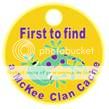Let’s follow LPT 3
Pitman park
McKee Clan’s cache
Let’s follow LPT (Little Para Trail) is a series of caches along the trail for you to find. Please enjoy the walk or Ride as we have and happy hunting.
Due to the number of caches in carisbrook park and Howie bowie reserve we decided to start in Salisbury and continue out to sea. Enjoy the walk or ride.
FTF – Locus Cache STF – ~*KittyKat*~ TTF – Kyliem34
Local point of interest
interest -
Pitman Park Waterfall
A common place to have your wedding with a waterfall backdrop and a great place for those fantastic photo’s. If there is a wedding you may be able sneak this cache but don’t recommend too. A nice park that is well maintained by the Salisbury council. It is the pride of the Salisbury area for the council. The waterfall is the start of a nice man made river and will lead you to LPT 4 where it is pumped back up to the waterfall. Such a beautiful place.
Public toilets
One of the few public toilets accessible along the trail is just north of GZ by 30ish meters. So for the little tackers a great time for a quick stop. There is also a water fountain to fill those water bottles.
Why call it Salisbury
Salisbury is a vibrant community offering a wide range of recreation opportunities including beautiful parks, reserves and wetlands for you to enjoy. It takes in the historic seaside town of St Kilda with its award winning adventure playground.
Explore Salisbury’s local trails and wetlands including the Little Para Trails, the Wodliparri Trail at Kaurna Park and Dry Creek Linear Park.
The first people associated with the Salisbury area were the Aboriginal people known as the Kaurna. Recent research indicates that far from living a nomadic life style, groups were settled in campsites along the coast and inland plains of the Adelaide region. Many occupational and sacred sites still exist around the Salisbury area, including the Greenfields Wetlands. In 1839, three years after the founding of South Australia, a Scot named John Harvey migrated to South Australia. In 1847 he bought Section 2191 along the Little Para River and decided to develop a township there.
The township allotments went for sale the following year. John chose to name the township ”Salisbury” as his wife came from near Salisbury (on-the-plain) in England. His wife Ann (nee Pitman) was related to Sir Isaac Pitman of shorthand fame. Many of the streets in Salisbury are named after John and his family.
Most of the early settlers were English, Irish, Scottish and Welsh. There were also German settlers and some French.
Since World War Two Salisbury had grown and changed dramatically due to changes in transport, population growth, technology, immigration and its proximity to the city of Adelaide.
Little Para Trail
The Little Para Trails follow the Little Para River, which has many attractions for all to enjoy. Flowing from the City of Salisbury's hilly escarpments to the plains, it meanders through many significant sites that played an important role in the early development of the City. Of great importance are the remnants of natural landscapes present along the river's edge. Varieties of eucalyptus woodland and native golden wattle still exist and some of the earliest almond trees and orange groves are still blossoming.
Points of interest along the trails include Deal Court, Paralowie House, Pitman Park, the Old Water Wheel, Harry Bowey Reserve, and Carisbrooke House.
Little Para River
Origin – near Lower Hermitage
Mouth – Globe Derby Park
Avg Discharge – 3590 m6/year
The Little Para River is a seasonal creek running across the Adelaide plains of South Australia, whose catchment fills reservoirs that supply some of the water needs of Adelaide’s northern suburbs. It runs from its source near Lower Hermitage in the Mount Lofty Ranges, flows north westerly to the Little Para Reservoir and then westerly to the Barker Inlet of the Gulf St Vincent at Globe Derby Park. The lower portion of the river is badly affected by human activity and storm water runoff but the upper reaches have a good range of biodiversity.
The river attracted John Harvey to form his settlement at Salisbury in 1847 and was crucial to the development of the citrus industry from 1852. In the 1960s the City of Salisbury began acquiring land for public space, and a belt of parklands with biking and walking trails now borders the river. The river’s name derives from the Kaurna word Pari which roughly translates as a stream of flowing water.
As the river flows down from the Adelaide Hills over the Para fault escarpment, it has formed a large alluvial fan on which Salisbury is built. The river is narrow and winding, formerly flooded in heavy rain and rarely reaches its sea outlet. Over time the river has been widened and levees added to reduce this flooding. In the 1800s lack of consistent flow in the river and the absence of an organised water supply system led to the digging of wells. The Little Para refreshes the well's water, mostly held in clay, sand and gravel layers up to 200 feet (61 m) deep. The Little Para Reservoir is built in the path of the river for water storage and flood mitigation. As the river's catchment is insufficient to fill the reservoir, it is mainly used to store water pumped from the River Murray. Periodically water is released from the reservoir into the river, enabling refreshing of ground water.
From Wikipedia, the free encyclopedia

For the First to find there is a certificate and a unique FTF path tag. They are not swapped or given out so the first to find pathtag will be a unique item that no one else will have.